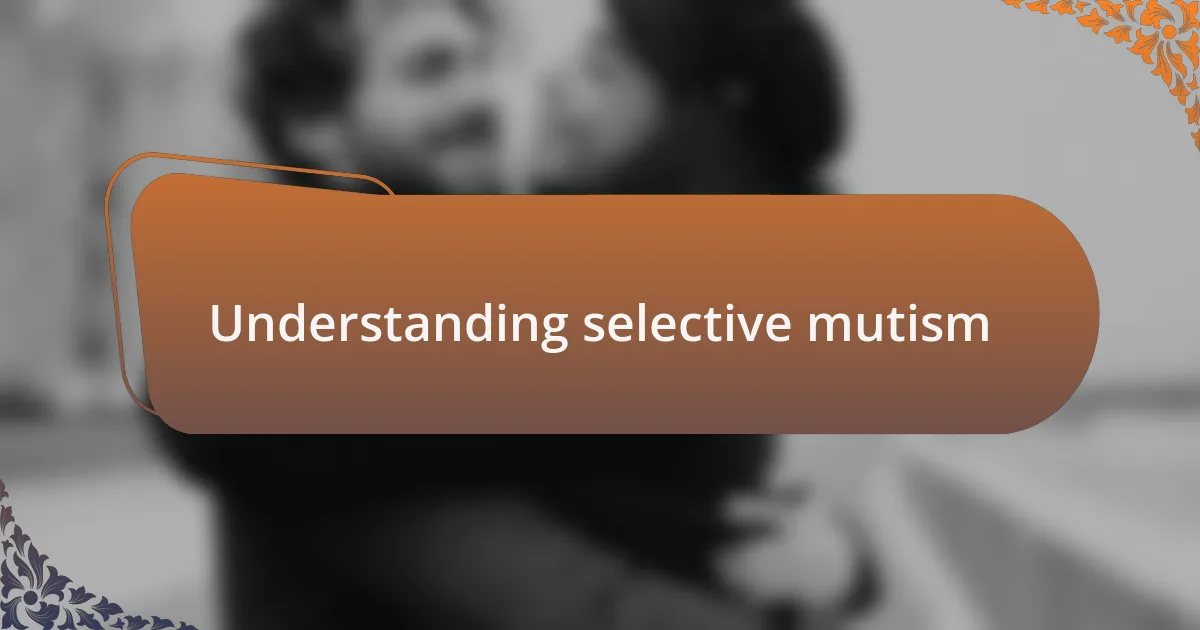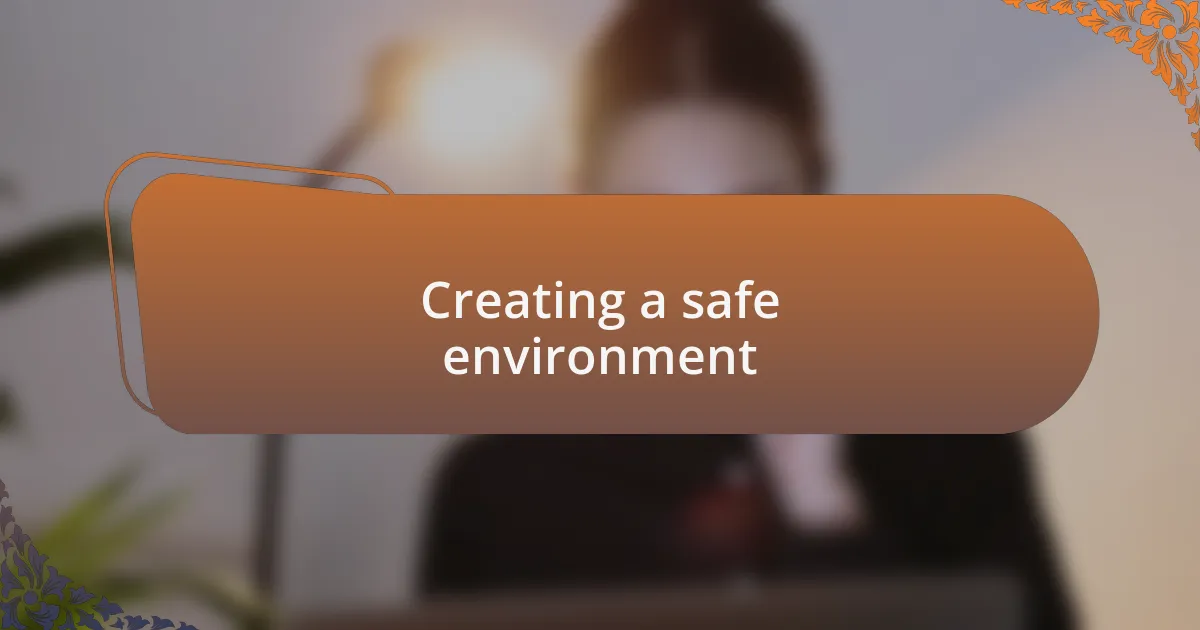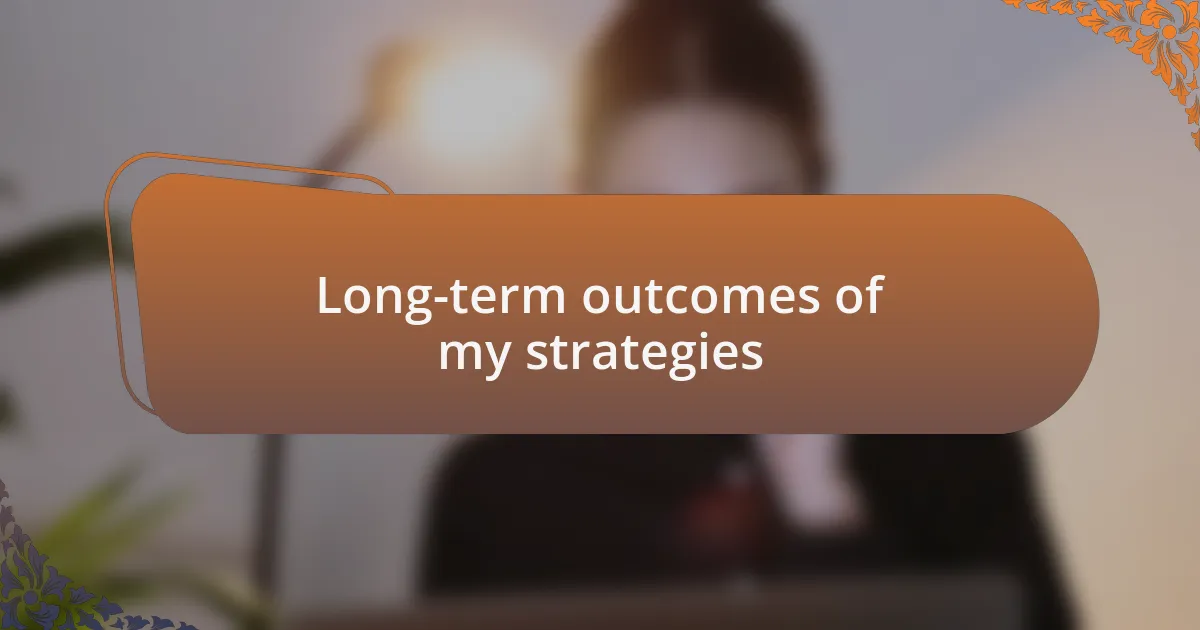Key takeaways:
- Selective mutism is a complex condition rooted in anxiety, necessitating empathy and patience from caregivers and educators.
- Gradual exposure through structured activities, role-playing, and personalized strategies builds confidence and reduces anxiety in children.
- Creating a safe environment with supportive adults and predictable routines fosters communication and self-expression.
- Celebrating small milestones encourages persistence and reinforces the idea that each step counts towards overcoming selective mutism.

Understanding selective mutism
Selective mutism is often misunderstood as mere shyness, but it goes much deeper than that. I remember a close friend of mine who struggled with this condition; every time she was in a social situation, her words seemed stuck in her throat. It’s heartbreaking to watch someone hold back, not because they want to, but because anxiety grips them tightly.
Imagine being in a room full of familiar faces, yet feeling utterly alone. For many children with selective mutism, this experience is all too real. They yearn to communicate, yet fear paralyzes their voices. I often ponder how tough that must be—why is it that some experiences leave us feeling so helpless?
Understanding selective mutism requires empathy and patience. It’s not just about the inability to speak; it involves a complex interplay of anxiety and social situations. From my perspective, creating a nurturing environment is crucial. What if we could all help by simply fostering spaces where children feel safe to express themselves? That’s the key to unlocking their voices.

Importance of gradual exposure
Gradual exposure is vital in helping children overcome selective mutism. I recall one instance when I volunteered at a local school, witnessing the transformation of a child who slowly engaged with his classmates through structured play activities. Each small step, from nodding to simple words, allowed him to build confidence at his own pace, highlighting how gradual steps can effectively reduce anxiety.
Think about the pressure a child feels when thrust into spontaneous speaking situations. I learned that breaking tasks down into manageable parts creates a sense of safety. It’s like learning to ride a bike; mastering balance before tackling speed can make all the difference. This personalized approach can help children reclaim their voices, reflecting their unique journey rather than forcing them into the deep end.
The process of gradual exposure nurtures trust and familiarity, enabling children to communicate in more comfortable settings. Personalizing each experience allows them to confront their fears without the overwhelming burden of expectations. Isn’t it powerful to consider how these small victories can accumulate, leading to significant breakthroughs in their ability to connect with others?

Benefits of exposure strategies
Exposure strategies play a crucial role in helping children with selective mutism gradually build their confidence in communication. I remember a child I worked with who felt completely frozen in social contexts. By gradually introducing scenarios where she could practice speaking, like ordering her favorite snack, we witnessed her surprise at her own capabilities. It’s fascinating how these small interactions can unlock a child’s potential.
Additionally, exposure strategies foster resilience. Each successful encounter, no matter how minor, can create a ripple effect, helping children understand their self-efficacy. I once observed a young boy who struggled to greet his peers. After weeks of practice in the safety of structured environments, he surprised us all with a hearty “hello” to a classmate. It’s uplifting to see how these incremental successes can motivate them to take on even bigger challenges.
Not only do these strategies reduce anxiety, but they also enhance social skills and relationship building. Children begin to see communication not just as a task but as a rewarding experience. I’ve felt the joy radiating from kids when they realize they are being heard and understood. Isn’t it heartwarming to witness a child go from silence to sharing their thoughts and feelings with others?

Techniques for gradual exposure
To effectively implement gradual exposure, one technique I often recommend is the “hierarchy of tasks.” This involves creating a list of situations that range from least intimidating to most challenging. I remember guiding a child who was terrified of speaking in group settings. We started with simple activities, like whispering answers to me in a one-on-one setting, and slowly progressed to sharing ideas in a small group. It’s incredible how such a simple structure can empower children to tackle their fears step by step.
Another powerful technique is role-playing. I once facilitated a session where kids took on different characters to practice conversations in various scenarios, like ordering at a café or introducing themselves at a party. Not only did they find it fun, but this imaginative play also helped alleviate some of their anxiety about real-life interactions. What’s fascinating is how they often became more comfortable with speaking when they were “in character,” proving that a shift in perspective can make a world of difference.
Finally, I encourage parents to use everyday moments for practice. Engaging in low-pressure situations—like discussing a favorite show during dinner—can subtly reinforce communication. I’ve seen children light up when they realize their opinions matter, leading to more significant breakthroughs over time. Have you experienced this kind of growth in your child? Witnessing such progress fills me with hope, reminding us that every small effort contributes to larger victories.

Creating a safe environment
Creating a safe environment is essential for children with selective mutism to feel comfortable expressing themselves. I once worked with a child who found solace in a quiet corner of the classroom, surrounded by familiar items like toys and books. It really struck me how this small space allowed him to feel secure enough to share his thoughts when he felt ready. Isn’t it amazing how a little corner can become a world of confidence?
I also emphasize the importance of a supportive adult presence. I recall a moment during a community event where I stood beside a shy child, simply listening and providing my silent encouragement. The warmth of familiarity and non-judgmental support can significantly ease anxiety and empower them to speak. Isn’t it incredible how just our presence can affirm to a child that they are not alone in their journey?
Moreover, creating a predictable routine can help reduce anxiety. I remember introducing a simple morning ritual for a child who struggled to communicate during school. Each day began with a brief chat about their favorite topic, which soon became a cherished tradition. Do you think routines can create a sense of safety and lead to growth? From my experience, it’s clear that consistency breeds comfort, allowing children to thrive at their own pace.

Personal experiences with exposure
Personal experiences with exposure can be transformative. I remember working with a child who struggled at home but found a breakthrough during a simple playdate with a close friend. As they interacted, I witnessed her voice gradually return, first with whispers and then confidently sharing her thoughts about their game. That moment taught me how crucial it is for children to have exposure in low-pressure environments.
Reflecting on my own experiences, I recognize how small, gradual interactions can lead to big changes. I once challenged myself to engage in brief conversations with strangers at the local market. Initially, it felt daunting, but over time, I built confidence. This personal growth reminded me that pushing through discomfort can eventually lead to greater self-assurance. Have you ever noticed that taking little risks can encourage bigger leaps?
Additionally, I observed that celebrating even the smallest milestones is vital in this process. I recall receiving an email from a parent whose child had finally ordered their own meal at a restaurant. The joy in her words affirmed the significance of each achievement, no matter how minor it may seem. How can we remind children that every step counts on their path to communication? From my experience, recognizing these moments not only boosts their confidence but also reinforces the value of persistence.

Long-term outcomes of my strategies
The long-term outcomes of my strategies have been remarkable, often surprising even me. For instance, one child I worked with initially struggled to speak at school. Fast forward a few years, and I witnessed them confidently leading a group discussion during a class presentation. It’s moments like these that reaffirm my belief in gradual exposure as a powerful tool for overcoming selective mutism.
I’ve also found that the relationships built during these gradual exposure experiences can last well beyond the initial interactions. I remember a teen who started attending a local theater group to help with their speaking anxiety. Not only did they develop a love for performing, but they also forged friendships that provided ongoing support. Isn’t it amazing how these connections can become a lifeline for someone navigating challenges in communication?
The cumulative effect of consistent, small victories truly shapes an individual’s future. I still recall receiving a heartfelt note from a young adult thanking me for encouraging them to join a community volunteer program. They explained how that single step helped them secure a job, completely transforming their life. Can you see how the threads of gradual exposure weave through various aspects of a person’s journey, ultimately leading to growth and empowerment?